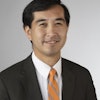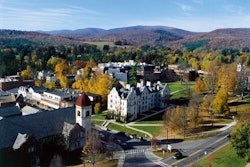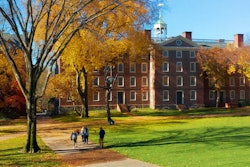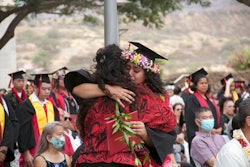The Jeremy Lin phenomenon is a breakthrough for Asian Americans like no other. In a time when there are more Asians and Asian Americans on college campuses than ever before, Lin’s explosion into our pop consciousness as an NBA basketball star is allowing society a new pathway to see Asian Americans. People in general have been stuck in a rut – especially if you think Asian Americans are just the math whizzes, first chair violin, or the local TV anchor gal. Lin, the first American-born Chinese of Taiwanese descent is forcing us all to look beyond the stereotypes, and to make us own up to a diversity that is truly diverse.
The most important thing is seeing the difference between Asian and Asian American.
They aren’t the same, though the immigrant experience connects the two. If you didn’t know there was a difference between now retired NBA star Yao Ming and Jeremy Lin, now you do. And it’s not height.
Certainly, there have been Asian American breakthroughs before in the United States.
But when Norm Mineta became the first Asian American to serve in two presidential Cabinets we didn’t have Norm-mania. In that sense, there’s been nothing quite like what we’ve seen the last few weeks. It’s like the diversity version of the Beatles.
Unfortunately, Linsanity hasn’t been without its awkward moments.
On the one hand, it’s been an easy embrace. Everyone loves a winner, especially one whose presence has catalyzed a turnaround of a losing New York sports team. In the media center of the world, Lin makes good copy. He’s a headline writer’s dream.
Lin favors the coinage “Super Lintendo.” But there are all sorts of Lin puns out there. My contribution: “Lin”-phomania, for the non-stop love everyone feels for Lin.
But when copy writers get giddy, they resort to the stereotypes they know. Sports columnist Jason Whitlock went with a penis joke. ESPN resorted to using a clichéd phrase to describe Lin’s high number of ball handling errors. But does “Chink in the armor” really cut it? Lin’s success has drawn everything out into the open – even our subconscious racism, and apparently, there’s a lot of that.
Lin heard taunts when he was at Harvard, so that’s nothing new. But the flecks of racism we’ve seen only show how little we know about Asian Americans. And when we are blessed with an opportunity like Lin arriving on the scene, isn’t it odd that all we know is all we know, and it’s racist? Bang the gong, give me some yo-yo-talk, pass the MSG. One graphic had Lin popping out of a fortune cookie.
There’s a fine line between good fun and racism. Black people know that when cartoonists used pick-a-ninnies. Let’s hope we don’t see Lin in a bamboo hat and slant eyes anytime soon.
We’ve stopped doing that kind of thing with other ethnic athletes. We know that when a Black athlete makes good, we won’t bring out the watermelon and chicken references.
And the mayor of East Haven, Conn., now knows he shouldn’t show try to make amends to a Latino community by saying he’s going to eat tacos.
Linsanity doesn’t have to give into the inanity of racism. Lin’s success isn’t our cue to desensitize and lower our tolerance levels. But with Lin in the limelight, we’re learning how to get there.
Specifically to the higher ed world, Lin’s saga shows what can happen when athletics and academics are put in perspective. Lin was an Ivy League basketball player at Harvard. The Ivies don’t give out athletic scholarships, and subsequently don’t become de facto minor leagues for professional sports. When that’s out of whack, it exposes the conflicts between academics and athletics. Too many campuses have lost their way. Athletics make money and bond alums, but those things shouldn’t aren’t the real purpose of higher ed. If the purpose of many schools is to get to the NFL or the NBA, the Ivies show you can have the biggest star on the professional planet much cheaper than the athletic budget of your typical D-1 university.
For Lin, his athletic career was all on him. No scholarship. No one drafted him in the NBA. So he became his own athletic entrepreneur. He tried out, got cut from two teams. He even played in the D-league, the real minor league of the NBA. He connected with the Knicks, but even there he faced being cut were it not for injuries to their millionaire ball players.
Time to consider playing in the Philippines? Not Lin.
He stayed put. He prepared, got better and when he got his chance, he excelled. He got past stereotypical thinking others imposed on him, and now he plays on the biggest basketball stage in the biggest city in the world.
What did he apply? His own sense of affirmative action. He believed. He didn’t give up. He made it.
The Knicks have lost one game in the last eight as I write and Linsanity evolves. Good thing. There’s a lot to learn from the Jeremy Lin story.
Emil Guillermo, a former host of NPR’s “All Things Considered,” has covered diversity issues for 30 years. His column, “Amok,” is at www.aaldef.org/blog and at www.amok.com.





















